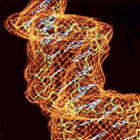About Switchgear

SwitchGear Genomics was founded in 2006 by Richard Myers, Nathan Trinklein and Shelley Force Aldred from Stanford University. The team gained first-hand experience creating tools for functional genomics research as part of their work in the ENCODE (Encyclopedia of DNA Elements) Project Consortium which is funded by the National Human Genome Research Institute. A fundamental goal of SwitchGear is to identify functional elements in the human genome and develop this genomic content into novel high-throughput cell-based functional assays.
Our team’s unique combination of expertise in computational regulatory element identification, experimental validation, and data analysis leads to the ongoing creation of new and innovative high-throughput tools for studying regulatory element function across the genome. We have developed a comprehensive approach to generate insights into gene regulatory networks with our full LightSwitch Reporter Assay System that includes over 30,000 endogenous 3’UTR and promoter luciferase reporters, validated biomarkers, miRNA target validation sets, synthetic response elements, and optimized luciferase assay reagents to study gene regulation in living cells. Our genome-wide panels of transfection-ready cell-based reporter assays measure the transcriptional and post-transcription regulation of any gene in the genome and for any of our experimentally-validated pathways.
Our complete, cost-effective assay system is:
- Comprehensive and simple to implement without the need for cloning or DNA preparation
- Quantitative and sensitive: our novel RenSP luciferase technology provides industry-leading sensitivity and dynamic range
- A direct measure of function: study the activity of human DNA elements directly in a cell-based environment
In March, 2013, SwitchGear Genomics was acquired by Active Motif, Inc., a company that develops, manufactures and delivers innovative tools that enable epigenetics and gene regulation research.
